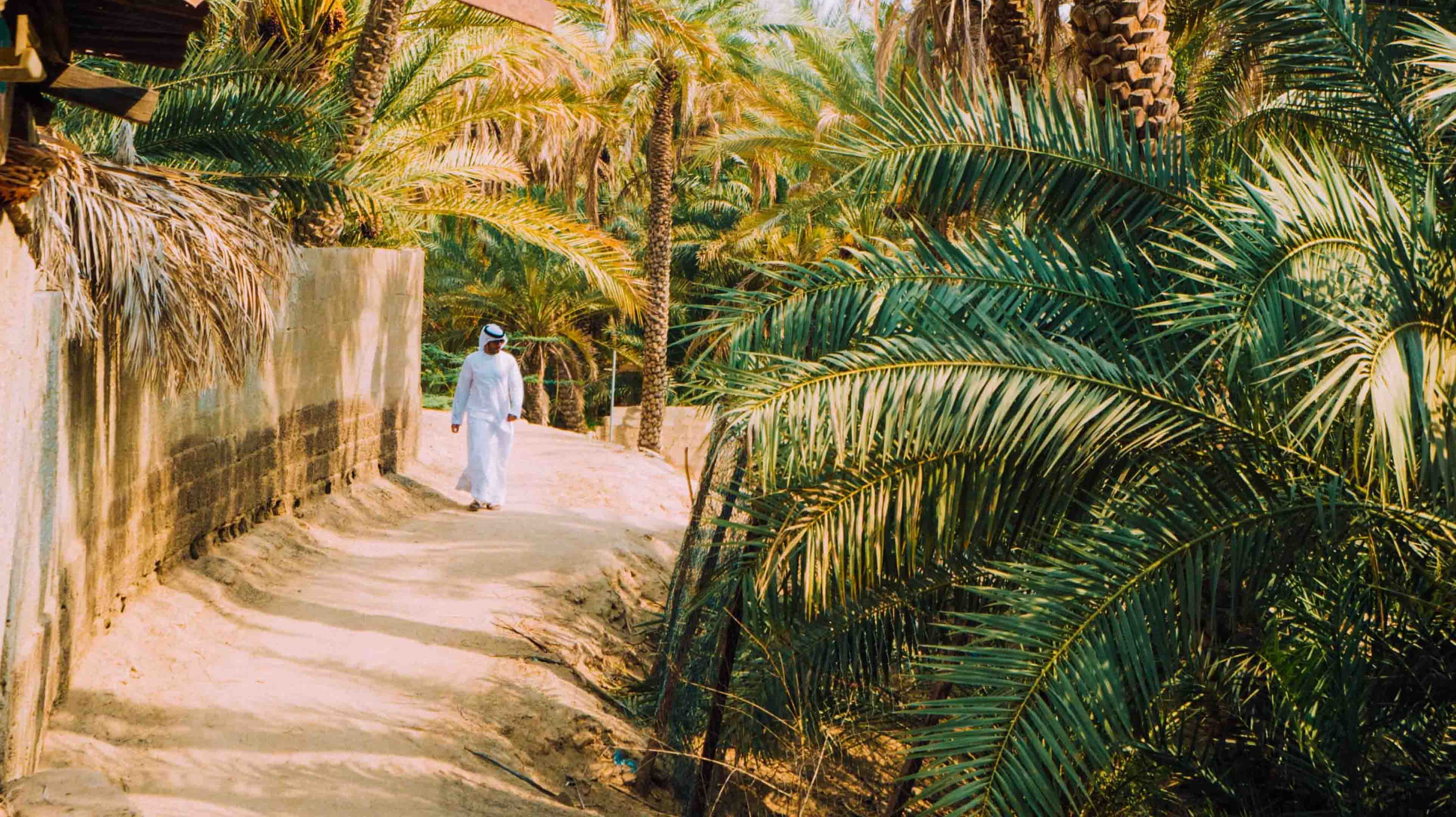See All
Al Ain Oasis
Al Mutawaa, Al Ain
With its still-operational traditional falaj (ancient irrigation system) and meandering pathways shaded beneath a thick canopy of over 147,000 date palms and other fruit trees, Al Ain Oasis is the perfect place to bring family or friends to see what agriculture in this region has looked like for millennia.
Covering 1,200 hectares, this lush oasis provides a unique insight into the region's inhabitants who began taming the desert 4,000 years ago. Located in the centre of Al Ain, Abu Dhabi's garden city and heritage heartland situated about a one-and-a-half-hour's drive away from the capital, this is the largest of Al Ain's oases. Farmers tend to thousands of date palms of 100 different varieties, as well as fodder crops and fruit trees, such as mango, orange, banana, fig and jujube (known locally as sidr). Individual plots and working farms are separated from each other by historic boundary walls.
The water supplying the lush oasis comes from both wells and the ancient falaj system that taps distant underground or mountain aquifers and then delivers the water, sometimes over many kilometres, to farms via a system of ground-level and below-ground aqueducts. Al Ain Oasis has plenty of working examples of the falaj that have been used for centuries. There are two main falaj systems serving the oasis: Al Aini and Dawood. They provide water to two separate parts of the oasis and both come from the southeast, the direction in which the Hajar Mountains and the nearby Jebel Hafit mountain lie.Once inside the oasis, water is distributed via an intricate network of channels. Distribution is strictly enforced and implemented by blocking channels in a manner that directs water to the required areas only.
Al Ain Oasis has been a UNESCO World Heritage Site since 2011, but only recently, with the construction of an educational Eco-Centre and the addition of an extensive system of shaded pathways, was it opened to the public.Through a series of immersive interactive exhibits, the Eco-Centre highlights the measures being taken to preserve the delicate oasis ecosystem and celebrates the invaluable contribution that Al Ain's oasis farmers have made to agriculture through their traditional farming methods.
The UN's Food and Agriculture Organization recognises all of Al Ain's oases for their importance as repositories of genetic resources, biodiversity and cultural heritage.
Imagine being in a desert and wondering how to channel water into a town for irrigation to nourish the grasslands - this was when the Bedouins residing there decided to install a falaj system. The two central falaj systems here are called Al Aini and Dawood. As you stroll around the oasis, you will see these 3,000-year-old dug-up channels that are intricately connected to bring water from the mountains and distant places. The best part? These waters keep the plantation fresh and thriving even today!
The water can disappear and reappear, depending on the season, so don’t be disappointed if it isn’t there when you visit.
As you stroll in the shadow of the tranquil palm trees, take in the sounds of nature, from the gentle babbling of the stream to the twittering of (sometimes exotic) birds flying by. Benches line the pathways if you wish to take breaks from walking or soak in the moment. If you prefer a little more of a ‘riding rush’ on your tour, upon entry, you can rent a bicycle or ask for an electric buggy to help navigate you around the labyrinth of paths.
Stopping by the free-to-enter Eco-Centre, a sustainable and environmentally friendly building, will give you additional insight into the historical significance of Al Ain Oasis with the help of the interactive exhibits. If you are visiting, add this Abu Dhabi oasis to the top of your list!
Take a virtual tour

Al Ain Oasis
Start 360 experience
Frequently asked questions about Al Ain Oasis
Why is the Al Ain Oasis important?
The significance of Al Ain Oasis comes from the fact that it was inhabited almost 4,000 years ago, making it one of the world's oldest permanently inhabited settlements. The oasis is even home to the falaj system, an ancient irrigation method. For this reason, it was marked as a UNESCO World Heritage Site.
What is Al Ain Oasis?
Consisting of 147,000 date palm trees and 100 other plantations, Al Ain Oasis is a lush escape from the desert.
How long is the Al Ain Oasis?
Al Ain Oasis covers about 1,200 hectares of land and is essentially filled with serene pathways and lines of date palm trees and other plantations. You could spend up to 2 hours here roaming amongst nature.
Which is the largest oasis in UAE?
Al Ain Oasis is the largest oasis in the UAE, followed by Liwa Oasis.